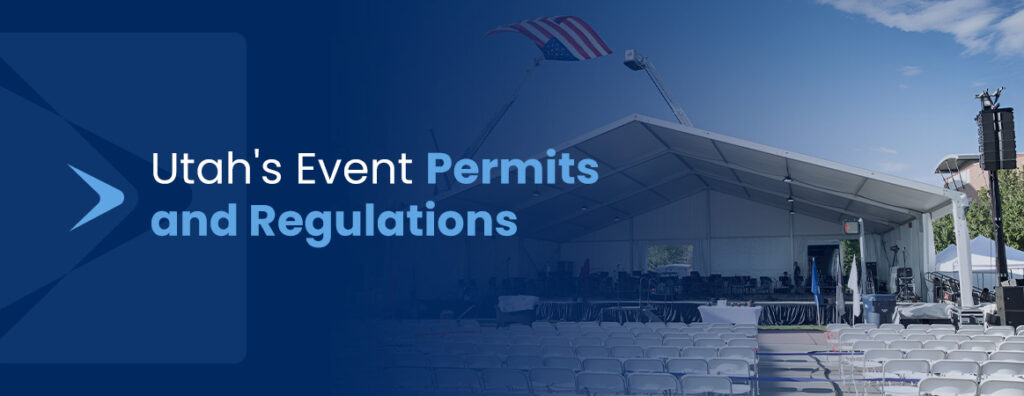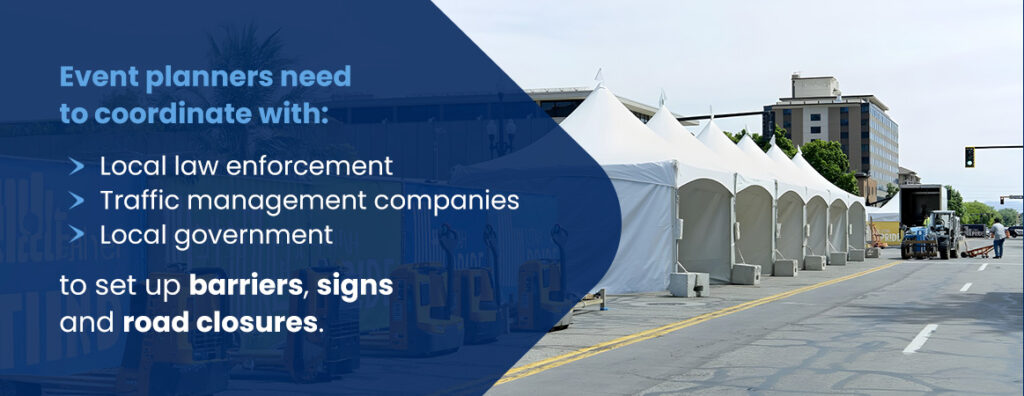
When hosting an event in Utah, it’s easy to get swept up in hiring food vendors, renting rides, setting up tents, purchasing alcohol and more. An easy mistake to make is forgetting to secure the necessary permits for outdoor events. We’re covering the permits you’ll need to avoid costly fines or shutdowns.
While it’s important to check your area’s requirements, you’ll likely need at least a few of the following county and city permits for events.
Larger events, such as festivals and fairs, require special event permits. These cover things like parking, traffic control, security and public safety. Some counties and cities may have their own requirements when it comes to public spaces, streets or parks.
Here’s how to apply for a special event permit in various Utah areas:
You can check your county or municipality website for detailed information about regulations.
Private events where the host provides the alcohol at no fee to guests do not require a permit. However, you will need a permit if:
Permits are issued by Utah’s Department of Alcoholic Beverages Services (DABS):
To apply for a DABS permit, you must receive consent from the applicable department, such as Salt Lake City Business Licensing in Salt Lake City. In some cases, your venue will also need to have a permanent liquor license.
Receiving a temporary food establishment permit typically requires submitting menu details and details about food safety practices. Sometimes, vendors will have to disclose the qualifications of food handlers. Health and safety inspections may also be necessary, especially for food trucks.
The length of the permit depends on the area. For example, Salt Lake City County offers daily, three-day, extended and seasonal permits, while Davis County offers single-event and annual permits.
Events with amplified sound, live music or other loud activities often require a temporary noise permit, especially if they’re held outside. Specific ordinances regarding volume levels and when sound is allowed vary. The application process varies, too — in Salt Lake County, for example, temporary noise permits must be obtained 10 days prior to the start of the noise, and the process involves:
In some areas, you’ll need a special event permit if your event involves amplified sound. This is true of Summit County and Kaysville City.
Events featuring fireworks displays and pyrotechnics require licenses and permits. The Utah State Fire Marshal’s Office lists the following requirements for operators to become licensed:
After receiving their licensing and certification, operators may need to get a permit from the local emergency responders. Sandy City, for example, requires fireworks display permits issued by the Sandy City Fire Department.
Counties and municipalities may have specific rules regarding firework display locations, timing and safety measures.
Some events use public roadways, and Utah Department of Transportation (UDOT) standards keep everyone safe and keep traffic moving. If the following events desire to be within the UDOT right-of-way, they require a permit:
Applicants can apply using UDOT’s online permit system. You’ll be asked to provide several documents, including:

Event planners may also need to coordinate with local law enforcement, traffic management companies or the local government to set up barriers, signs and road closures.
If you expect a high turnout at your event, you’ll need to submit a temporary mass gathering application to the local health department. Getting a permit may require providing crowd management plans, creating emergency evacuation procedures and meeting insurance requirements. In some cases, a dedicated representative may need to remain on-site for crowd control during the event.
Specific rules vary. Salt Lake County, for example, classifies a mass gathering as one that lasts more than two hours and will be attended by more than 500 people. In Davis County, mass gatherings are at least two hours long but have an estimated attendance of more than 1,000 people. The same goes for Tooele County.
Some areas do not require permits for tents in residential areas, but permits for temporary structures are typically required for public events. These event venue permits can help ensure safety if you’re setting up temporary stages, tents, bleachers or other structures.
Earning a permit from the fire marshal may require providing structure design specs, disclosing load-bearing capacity, providing engineering reports or making structural calculations. Some areas also require engineering specs for stages, flooring, heaters and propane tanks. Inspections are also necessary. Inspectors often visit once the tent is up, but some areas may require a representative to be present on-site during the inspection.
While requirements vary, permits are generally required for tents totaling more than 400 square feet with walls or more than 700 feet without walls. All tents and temporary structures should comply with Chapter 31 of the International Fire Code.
Need a tent for your event? Diamond Event offers frame canopies, festival top canopies, twin pole tents, clear-span structures and more. When event planners rent from us, we’ll handle all the permits required for our products. With at least four working days’ notice, we can also handle the Blue Stakes process — a safety procedure that marks underground infrastructure and facilities to prevent utility damage before staking tents or canopies.
The process takes a minimum of three business days to process, and submission takes less than 30 minutes if done correctly. All we need is the address and specific location of the tent!
At Diamond Event, we understand that Utah’s permitting processes can be complicated. We provide services for thousands of events every year, and when you rent tents from us, we will help you navigate permits and the Blue Stakes process. We also offer other event-planning products, including flooring solutions, dance floors and event support products.
When planning the perfect event, the stakes are high. Browse our rental catalog today, or contact us to begin planning!
© Diamond Event, Inc. | Built by Twelve Legs Marketing